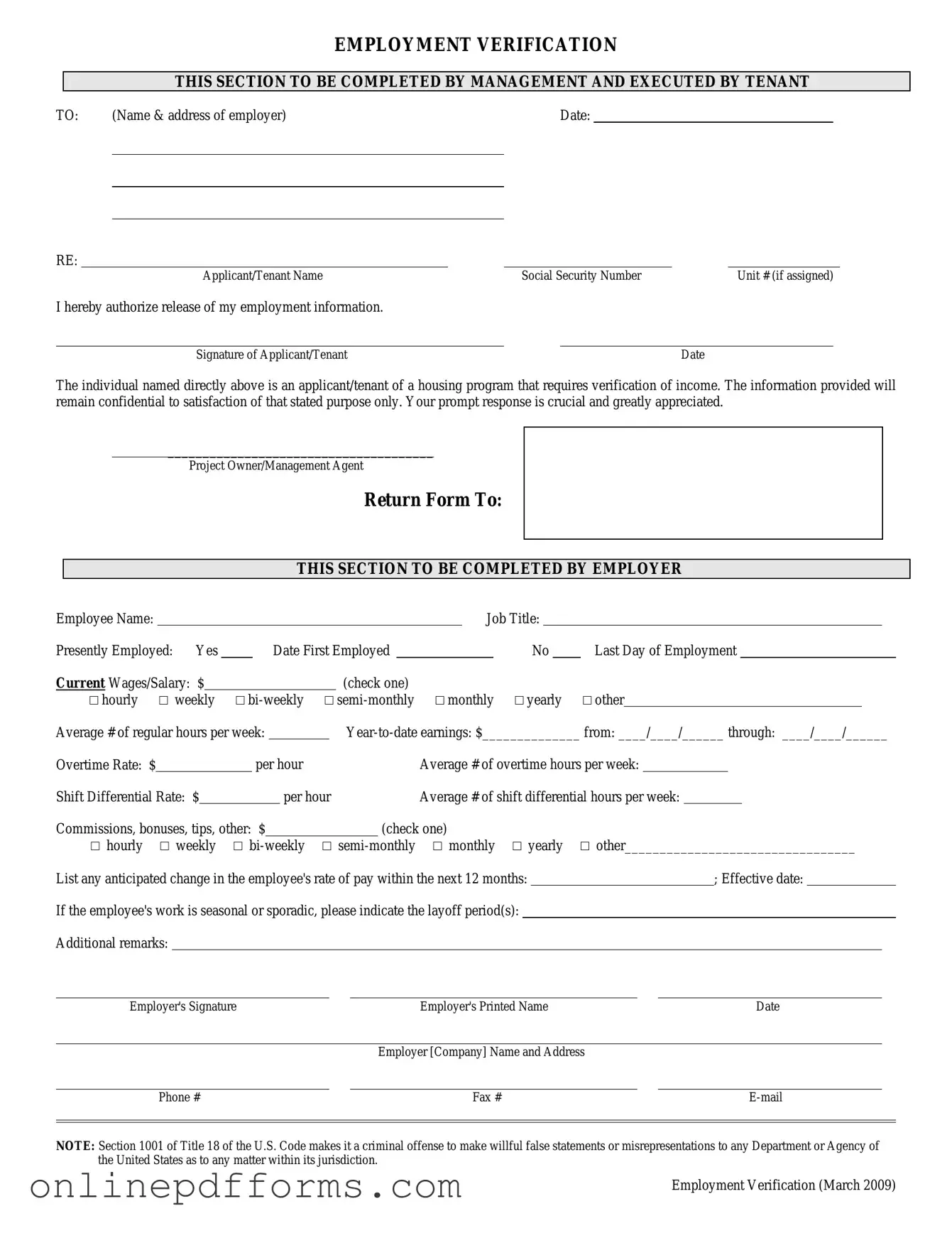The Employment Verification Letter is a document that serves a similar purpose. It is typically provided by an employer to confirm an employee's job title, dates of employment, and salary. Like the Employment Verification Form, this letter is often requested by lenders or landlords to assess an individual's financial stability. Both documents aim to provide assurance about a person's employment status, but the letter format tends to be more formal and personalized.
Pay Stubs are another related document. They provide proof of income and employment by detailing an employee's earnings over a specific period. While the Employment Verification Form confirms employment status, pay stubs offer a snapshot of an employee's financial situation. Lenders may request both to verify income and employment continuity, making them complementary in assessing an applicant's qualifications.
A Job Offer Letter is similar in that it outlines the terms of employment for a new hire. This document typically includes the job title, salary, and start date, which can also be verified through the Employment Verification Form. Both documents help establish a person's employment history, but the Job Offer Letter is focused on future employment rather than confirming past employment.
The W-2 Form is another document that serves a similar purpose. Issued by employers, it reports an employee's annual wages and the taxes withheld. While the Employment Verification Form confirms current employment, the W-2 provides a historical record of earnings. Lenders often look at both documents to assess an individual's financial reliability, especially when applying for loans or mortgages.
Reference Letters can also be compared to the Employment Verification Form. They are written by former employers or colleagues to attest to an individual's skills, work ethic, and professional conduct. While the Employment Verification Form confirms employment status, Reference Letters provide qualitative insights into a person's capabilities and character, which can be crucial during job applications.
Employment History Records are similar as they provide a detailed account of an individual's past jobs, including dates and positions held. These records complement the Employment Verification Form by giving a broader view of a person's work experience. Both documents are often required by employers during the hiring process to ensure candidates have the necessary background for the role.
Tax Returns can also serve as a form of employment verification. They show an individual's income over the years, reflecting their employment status and financial history. While the Employment Verification Form is a direct confirmation from an employer, tax returns provide a more comprehensive view of a person's financial situation, which is often needed by banks or lenders.
Background Check Reports often include employment verification as part of a broader assessment of an individual’s history. These reports can confirm job titles, dates of employment, and reasons for leaving. While the Employment Verification Form focuses solely on employment status, background checks offer a more extensive view that may include criminal history and credit reports, which are essential for certain job positions.
Social Security Statements can also be compared to the Employment Verification Form. These statements summarize an individual's earnings history and can serve as proof of employment. While the Employment Verification Form is typically employer-issued, Social Security Statements provide a government-backed verification of income, which can be useful in various situations, including loan applications.
Lastly, the Employee ID Card can be seen as a form of verification. It serves as proof that an individual is employed by a specific organization. While it does not provide detailed employment history like the Employment Verification Form, it is a quick way to confirm current employment status. Both documents can be used in various situations where proof of employment is necessary.
